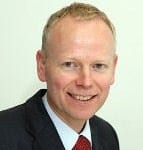Quad-play: driving mergers and acquisitions in the TMT sector
Following a number of deals in TMT – both mergers and announcements of strategic partnerships – it is clear that the emergence of quad-play is continuing to have a significant impact on the sector.
June 23, 2015

Telecoms.com periodically invites expert third-party contributors to submit analysis on a key topic affecting the telco industry. In this piece Richard Price, global head of TMT at Lloyds Bank Commercial Banking, explores the influence of the move towards quad-play among telcos as a driver for M&A activity.
Following a number of deals in TMT – both mergers and announcements of strategic partnerships – it is clear that the emergence of quad-play is continuing to have a significant impact on the sector.
The term quad-play refers to the convergence of services such as broadband, TV, mobile services and fixed landline, all provided via one consolidated contract. Effectively a one-stop-shop for consumers, quad-play can help to streamline and improve the overall customer experience.
For a telecoms provider, quad-play offers an opportunity to diversify its offering and expand its customer base, particularly as the fixed line and mobile markets have become increasingly saturated. It also helps providers to secure long-term customer relationships and offers them the opportunity to get to know their customers better.
Quad-play also follows on the back of significant investments being made by telecoms providers into the upgrade of networks from to 2G to 3G to 4G. These infrastructure upgrades have been highly capital-intensive over the years, further driving a need for telecoms providers to expand their customer base in order to absorb and spread the cost of that initial investment.
However, it is not just telecoms companies which are recognising the business benefits of quad-play. There has also been a proliferation of players in the pay TV market, which includes platforms such as Now TV and Amazon Prime, looking to benefit from cross-selling by offering their own services and products.
As the quad-play market has matured, there has been a marked increase in mergers and acquisition (M&A) activity.
Increasingly, smaller suppliers are tendering their services to telecoms companies who are looking to make acquisitions to remain competitive. As a result, the banking requirements of these larger businesses will rapidly change, particularly as some will require the requisite funding to complete acquisitions.
The outlook for quad-play is one of further changes. More consolidation is to be expected across Europe, as large firms look to expand into international markets, on the hunt for more users. Meanwhile, European telecoms providers, such as Iliad and Telefónica, are arguably already one step ahead of their UK counterparts, having secured millions of quad-play bundle subscribers in the past two years.
Amid this positivity, quad-play is also underlined with some tension. Regulators are seeking to maintain a competitive marketplace, while providers are hoping to build scale in order to secure a superior return on investment.
The challenge for the regulators is to strike the right balance between ensuring the market is a competitive one, but not so unattractive for the operators that the significant infrastructure investment required is delayed. A world class telecoms infrastructure is a pre-requisite for a world leading economy.
As the quad-play market continues to consolidate, and with companies seeking to remain competitive, the sector should expect a further increase in M&A involving telecoms providers during 2015. It all points to a dynamic period ahead for the TMT sector, with the resultant opportunities that brings for those keen to invest.
 Richard is the Head of Telecoms, Media & Technology (TMT) at Lloyds Bank. He has over 20 years of experience delivering financial solutions for TMT companies around the world. Before his career in banking Richard worked as a software engineer specialising in networking. He has an Master in Business Administration (MBA) from the London Business School and a BSc (Hons) in Computer Systems from Warwick University.
Richard is the Head of Telecoms, Media & Technology (TMT) at Lloyds Bank. He has over 20 years of experience delivering financial solutions for TMT companies around the world. Before his career in banking Richard worked as a software engineer specialising in networking. He has an Master in Business Administration (MBA) from the London Business School and a BSc (Hons) in Computer Systems from Warwick University.
Read more about:
DiscussionAbout the Author
You May Also Like


.png?width=300&auto=webp&quality=80&disable=upscale)







.png?width=300&auto=webp&quality=80&disable=upscale)


_1.jpg?width=300&auto=webp&quality=80&disable=upscale)